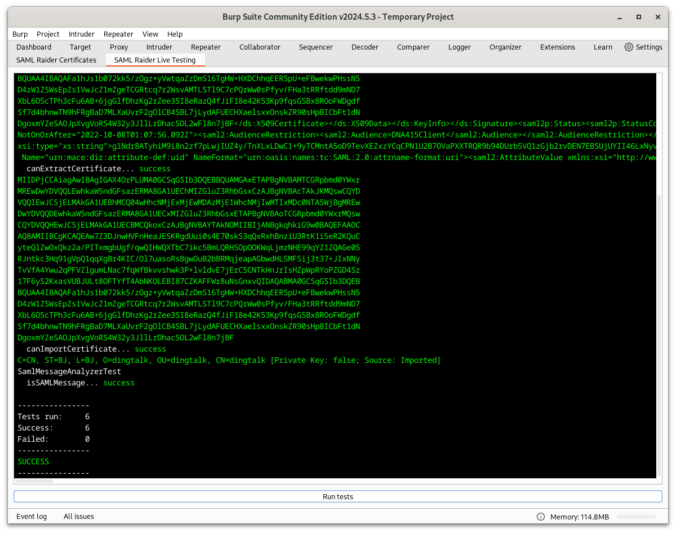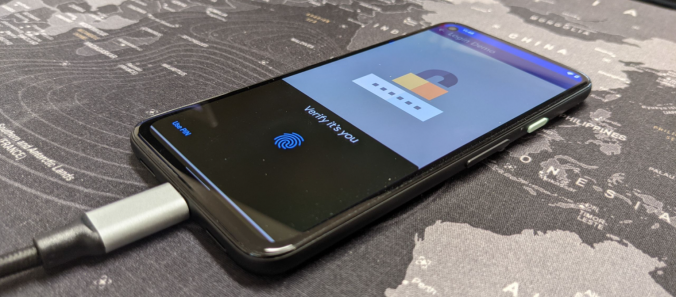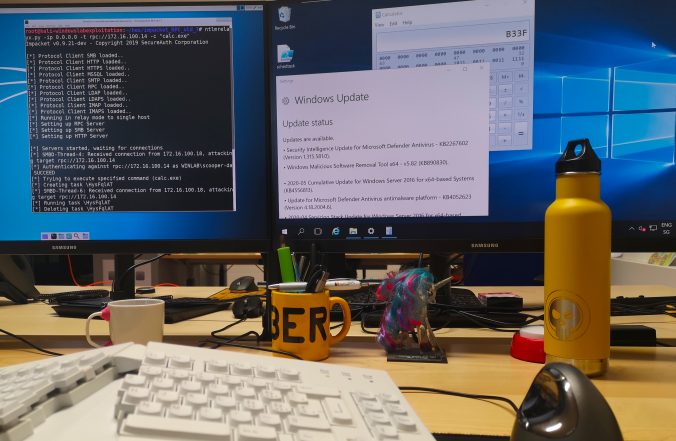SAML Raider is a Burp Suite extension and the tool of choice for many pentesters for testing SAML infrastructures. This blog post should give a brief introduction to what has changed in the new version 2.0.0. From Improving developer and user experience to bug fixes.
Compass Security Blog
Offensive Defense
Authentication and authorization are critical components of any application. Various standards and frameworks have been developed to facilitate the development of such components and make applications more secure. Among them, JSON Web Tokens (JWTs) have become popular choice over the years.
In this article, we discuss commons flaws in JWT-based authentication and present our extension to automatically check for these issues in Burp: JWT-scanner.
TL;DR An attacker is able to register new security keys (FIDO) or other authentication methods (TOTP, Email, Phone etc.) after a successful device code phishing attack. This allows an attacker to backdoor the account (FIDO) or perform the self-service password reset for the account with the newly registered sign-in methods. Microsoft deemed this not a vulnerability.
Passwordless products promise greater security and convenience by allowing users to log in to Windows systems with only their smartphone. But what is going on behind the scenes and how could a domain’s security stance be worsened by such a solution? In this post I will explain how these products are implemented and detail the vulnerabilities and weaknesses discovered in three tested products.
ArcGIS [1] is a family of software providing geographic information system services. While testing a customer’s ArcGIS architecture we came across a SAML login flow. In this blogpost we show how we found and exploited an AES-CBC padding oracle in this flow.
During a customer project, we could bypass the biometric authentication mechanism of Ionic Identity Vault on Android, because the Android KeyStore entry does not require any authentication. This post shows how this was done and how it can be exploited.
Since a few years, we – as pentesters – (and probably bad guys as well) make use of NTLM relaying a lot for privilege escalation in Windows networks.
In this article, we propose adding support for the RPC protocol to the already great ntlmrelayx from impacket and explore the new ways of compromise that it offers.
This vulnerability was discovered by Compass Security in January 2020, disclosed to Microsoft Security Response Center and assigned CVE-2020-1113 as identifier.
About a year ago, the Burp extension SAML Raider [0] was released as a result of a bachelor thesis [1] in collaboration with Compass Security. This Burp extension automates most of the steps, which are necessary to test a SAML single sign-on process and perform according attacks. With SAML Raider, an authentication bypass vulnerability in a Service […]
Compass Security invested quite some time last year in researching the security of single sign-on (SSO) implementations. Often SAML (Security Assertion Markup Language) is used to implement a cross-domain SSO solution. The correct implementation and configuration is crucial for a secure authentication solution. As discussed in earlier blog articles, Compass Security identified vulnerabilities in SAML […]
Update – 13.10.2015: Netgear published a new firmware (version 1.1.0.32) which fixes the reported authentication bypass. My most recently appointed colleague, Daniel Haake, described in the previous blog article “Authentication Bypass in Netgear WNR1000v4 Router” how he found an authentication bypass in commonly used Netgear firmwares. Due to the rediscovery of the issue and its […]
© 2024 Compass Security Blog






